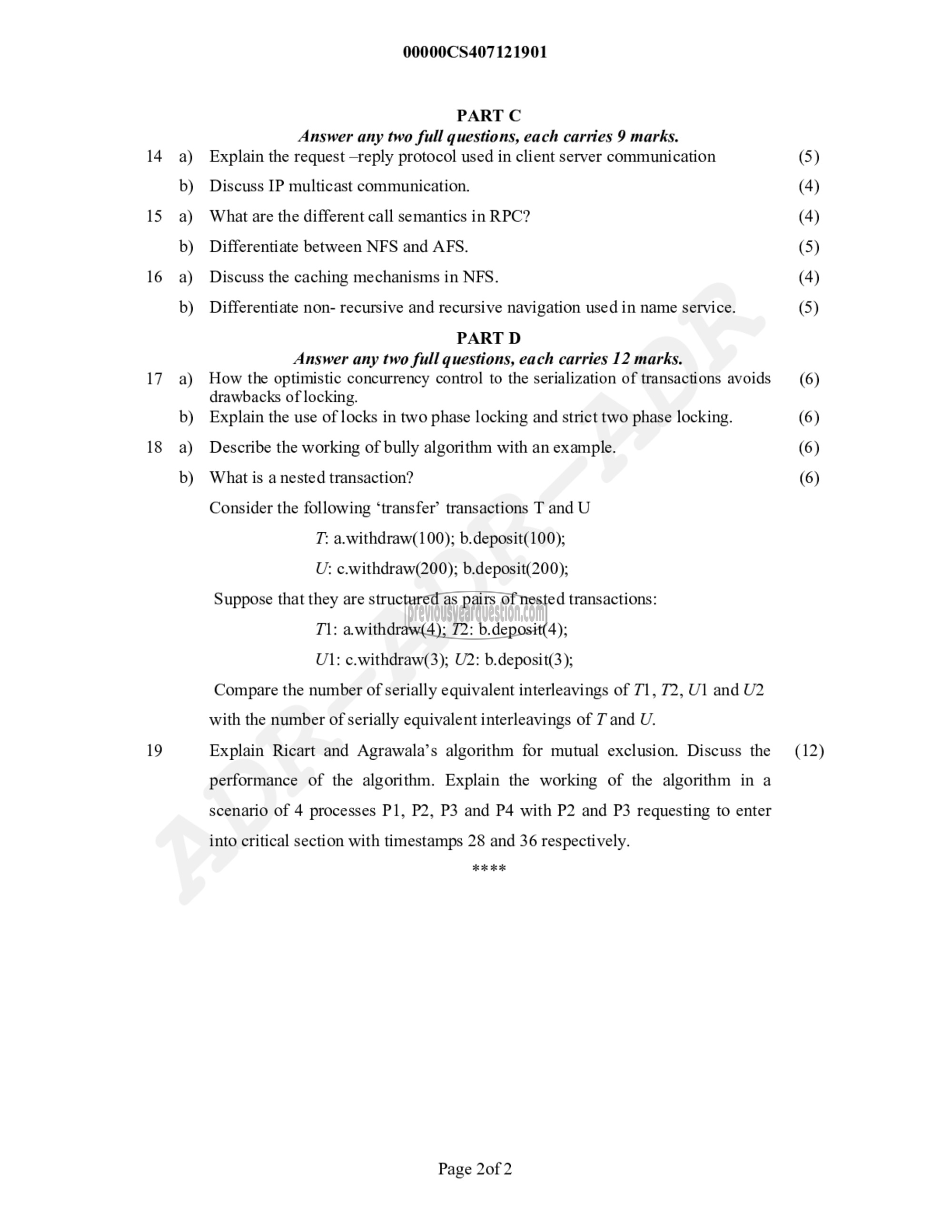APJ ABDUL KALAM TECHNOLOGICAL UNIVERSITY Previous Years Question Paper & Answer
Semester : SEMESTER 7
Subject : Distributed Computing
Year : 2020
Term : SEPTEMBER
Branch : COMPUTER SCIENCE AND ENGINEERING
Scheme : 2015 Full Time
Course Code : CS 407
Page:2
14
15
16
17
18
19
a)
b)
a)
b)
a)
b)
a)
b)
a)
b)
00000CS407121901
PART ^
Answer any two full questions, each carries 9 marks.
Explain the request —reply protocol used in client server communication
Discuss IP multicast communication.
What are the different call semantics in RPC?
Differentiate between NFS and AFS.
Discuss the caching mechanisms in NFS.
Differentiate non- recursive and recursive navigation used in name service.
PART D
Answer any two full questions, each carries 12 marks.
How the optimistic concurrency control to the serialization of transactions avoids
drawbacks of locking.
Explain the use of locks in two phase locking and strict two phase locking.
Describe the working of bully algorithm with an example.
What is a nested transaction?
Consider the following ‘transfer’ transactions T and U
7: a.withdraw(100); b.deposit(100);
U: c.withdraw(200); b.deposit(200);
Suppose that they are structured as pairs of nested transactions:
T1: a.withdraw(4); 72: b.deposit(4);
U1: c.withdraw(3); U2: b.deposit(3);
Compare the number of serially equivalent interleavings ೦೯71, 72, (71 and U2
with the number of serially equivalent interleavings of T and U.
Explain Ricart and Agrawala’s algorithm for mutual exclusion. Discuss the
performance of the algorithm. Explain the working of the algorithm in a
scenario of 4 processes 21, P2, 23 and P4 with P2 and P3 requesting to enter
into critical section with timestamps 28 and 36 respectively.
aK
Page 2082
(5)
(4)
(4)
(5)
(4)
(5)
(6)
(6)
(6)
(6)
(12
)
